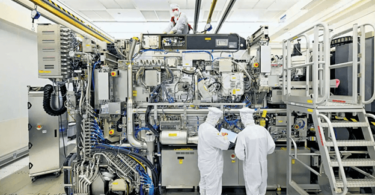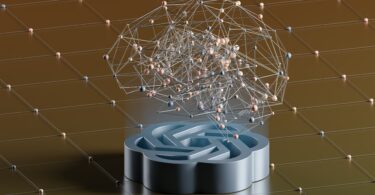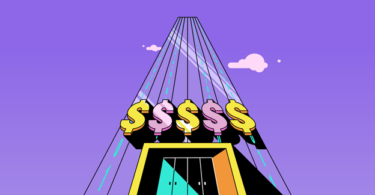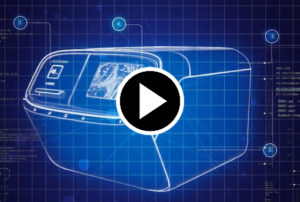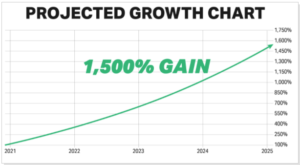Trader: “Do NOT buy $TSLA until you see this”
Sponsored
The man who called Tesla at $113 now says: “do NOT buy $TSLA until you see this.” He says this is a huge story nobody is talking about… And is telling everyone to mark March 20th on their calendar. Go here to see this now.
It’s called Web Infinity.
Or, simply…
Web∞
The thesis:
As the Internet grows and evolves, it’s going to continue to evolve its own rules, economics, and culture.
I say “continue” because this has already happened.
From the earliest days of ARPANET up through today's platforms and web3 systems, distinct governance philosophies, business models, and social dynamics have crystallized around different parts of this digital landscape.
BUT
Three key technologies are going to be fundamental to Web∞.
Crypto, AI, and AR/VR technologies.
The heart, the brain, and the eyes.
Allow me to explain. And reveal why they are complementary and, taken together, breathtakingly bullish.
The Heart (Blockchain)
Blockchains have one goal: printing blocks.
Think of them as primitive digital organisms striving to continue existing. Their only goal is to produce the next block.
Every minute. Every hour. Every day.
Each block produced is akin to a heartbeat — a sign that blood (data) still pumps through its veins.
Just as the biological heart does not concern itself with the external impact or personality of the total organism…
It matters little to the blockchain what value it creates in the world.
But in an open-ended, complex world, narrow structural aims can lead to broad, unforeseen impacts.
Three examples:
Gutenberg never aimed to upend Europe's religious social order — he tinkered to mechanize printing. Yet mass-produced Bibles shook institutional authority.
The builders of ARPANET never aimed to reshape global commerce and politics — they sought reliable military communications. Yet packet networking paved the way for today's Internet.
And the humble honeybee never aims to pollinate the flower — he aims to make honey. Yet pollination is an indirect positive consequence (that allows him to continue making honey).
Goal-driven but incidentally disruptive.
What’s an unintended positive consequence of the blockchain’s goal to print blocks? Cooperation.
Blockchains pay people to cooperate.
Cooperation is the fastest path to creating blocks. It’s also heinously good for positive forms of innovation.
Bullish?
At the bottom of the bear market, crypto’s total market cap was $800 billion. Mind you, that’s almost 6x bigger than it was in March 2020.
That’s despite all hell breaking loose in the crypto markets. Crypto empires fell. Programmers were imprisoned. Crypto billionaires disappeared without a trace.
And still… $800 billion.
In the last bull run, the market hit $3 trillion. In this one? Our eyes are on $8 trillion. Maybe more.
Now, onto the brain…
The Brain (AI)
If blockchain is the heart of this new digital superorganism called Web∞, AI is the brain.
The blockchain pulses blindly while the AI reaches out to grasp particulates.
If the blockchain's singular focus is on perpetuating itself by “printing” new blocks, then by analogy…
AI's fundamental goal would be to perpetuate and improve itself.
And its secondary effect? It might be to redefine intelligence.
Traditional intelligence in the modern economy is reactive. It waits until things break to fix them. It responds to problems, but rarely anticipates them. It’s almost always surprised by problems, despite their sheer certainty.
On a personal level, it’s that tinge of anxiety you get — especially when you’re poor or in a place far from civilization — right before you put the key into the ignition. The horrible thought that the car might not start, throwing your life into upheaval.
That anxiety that a problem is lurking around every corner is warranted. (That’s why we buy warranties.)
Today's intelligence is like a technical support center — available to assist when systems fail or when users request help, but rarely proactively addressing issues before they arise.
(Which is why the line’s always busy.)
It passively collects data, processes requests, and provides analysis upon demand. It does not self-direct to explore open-ended questions or outline long-term strategies.
It attends to alarms as they sound but does not scan the horizons for early signals or shifts in underlying conditions.
Present-day intelligence is thus rooted in reaction more than prediction.
It inherits a view of the world as a linear chain of causes and effects, rather than an interconnected web of emergent probabilities. It lacks imagination to envision alternative futures or composure to steer the currents of change toward optimal outcomes.
With the help of AI…
The intelligence of tomorrow is proactive, predictive, and anticipatory.
The blockchain crystallizes collaboration out of narrow self-interest; AI crystallizes anticipatory design out of narrow artificial learning processes.
Bullish?
Already AI scheduling systems show the value of optimization algorithms allocating resources for higher productivity.
This foreshadows more anticipatory intelligence in logistics, manufacturing and operations planning as predictive models guide wiser decisions.
This level of automation would also create an environment where traditionally non-creative industries will have the ability to take more creative risks.
Art is no longer a realm reserved for weirdos who tape bananas to walls…
It’s for anyone who appreciates the power of form and function.
(Anyone who has driven an Italian sports car. Anyone who owns a bespoke suit. Anyone who has admired enough Philippe Patek watches to know which one is their favorite. Anyone who has written with a precision pen. Anyone who appreciates handcrafted knives. Anyone who travels with Rimowa or Tumi luggage. They all understand form and function. “The future is already here,” William Gibson famously wrote in a 2003 issue of The Economist, “it's just not evenly distributed.”)
The Eyes
And the eyes…
The eyes take in the surrounding world and project vision to avoid hazards or identify opportunities…
Augmented reality (AR) technologies take data about the real-world environment and blend it with digital information.
Virtual reality (VR) creates blank digital spaces that users can immerse themselves in by looking around and interacting.
AR brings the digital into the real, while VR brings the real into the digital.
AR layers useful context onto real spaces to enhance situation comprehension — from geographic cues to object labels to social cues reading facial expressions or gestures. It augments perception to amplify cognition.
I could be Facetiming with a Vietnamese doctor specializing in leaky gut, but I wouldn’t have to fumble with Google Translate. Subtitles would show me exactly what he’s saying — and vice versa.
There’s also the prospect of Jarvis-level prototyping in both AR/VR.
With the advent of more flexible manufacturing, blockchain can be used to protect intellectual property while monetizing the data (IP-NFTs), AI is useful for rapidly iterating design variants, and AR/VR aids rapid virtual testing before physical production.
Thus accelerating the centuries-long trend of ephemeralization: do more and more with less and less until eventually you can do everything with nothing.
Much as 3D animation, broadband infrastructure, and responsive cloud servers animated Web 2.0, this trinity of crypto, AI and AR/VR make up the stack kindling Web Infinity today.
Investors who get ahead of this curve will be peering from their villas into paradise…
Wondering where and how it all went right.
Stay tuned for more.
Missed Microsoft? Here's Your Second Chance for a 249,000% Payday
Sponsored
Hi, Ross Givens here again. Congratulations, you're almost there! Thanks again for being a part of such a special day, for both of us. I feel overjoyed to share what I consider to be the No. 1 way to get in on the ground floor of the $15.7 trillion AI Revolution. And to give YOU a chance to lock into the one special stock that I think is on the verge of changing everything. Including your financial future. You must be feeling excited. But I hope you feel proud, too… Because I bet that fewer than 1 in 10,000 investors have ever heard about this under-the-radar AI company… (Which could make you up to 75X richer…) In the grand scheme – only A TINY FRACTION will follow through with real action – like you. This is potentially a once-in-a-lifetime chance at becoming independently wealthy… Take a look at what happened to a few thousand investors who had the good fortune to jump in on Microsoft's IPO. According to CNBC, if you invested back on March 13, 1986 when they first went public, and you stayed invested…
Your $1,000 investment would be worth $2.49 million now. When's the last time you had a shot at making 2,490 times your money? That's how Bill Gates became a billionaire. Not only him… Thousands of ordinary people who added Microsoft to their portfolios also got incredibly rich. My friend, according to my calculations, the gains from the extraordinary Micro-Cap AI Wonder Stock, trading at just $3 right now, could even be bigger than this. Reveal the $3 AI ‘Wonder Stock' here.





